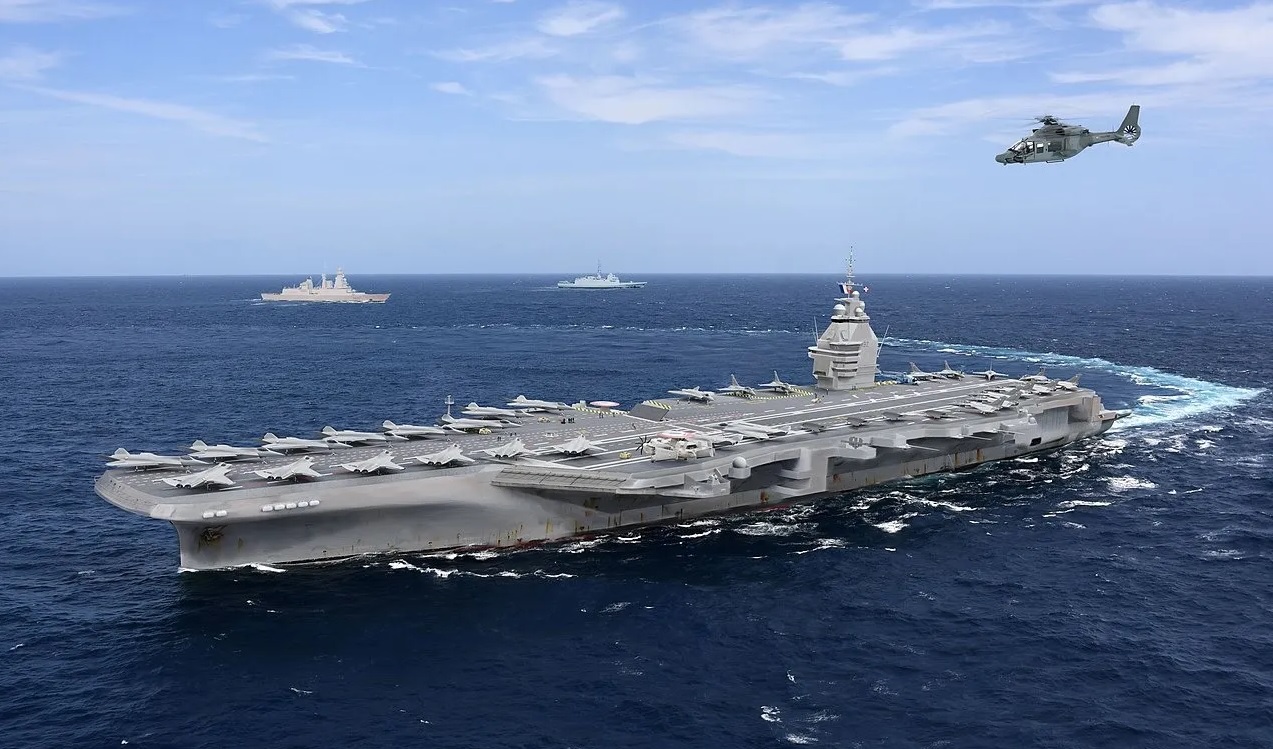France to Order Next-Generation Nuclear Aircraft Carrier in 2025

In 2025, France is set to officially order its next-generation nuclear aircraft carrier, marking a significant step in replacing the iconic Charles de Gaulle by 2038. This ambitious new vessel, known as the Porte-Avions Nouvelle Génération (PANG), will serve as the backbone of France’s maritime power for decades to come. Since the project’s announcement in 2020, the plan has sparked considerable debate regarding its necessity and effectiveness in the evolving landscape of naval warfare.
Critics argue that modern threats, such as hypersonic missiles and long-range anti-ship ballistic weapons, make aircraft carriers more vulnerable than ever. Detractors point to events like Operation Hamilton in 2018, where modern fighter jets, supported by tanker aircraft, showcased the capability of executing long-range strikes without the need for a carrier. They claim that a land-based air force with adequate refueling capacity could offer similar reach without the risk of exposing a massive floating target.
Supporters, however, counter these arguments by emphasizing the unique capabilities of a nuclear-powered aircraft carrier. They stress that modern defense systems have advanced alongside offensive technologies, providing the carrier group with robust protective measures. Additionally, no airbase can match the strategic mobility of an aircraft carrier, which acts as a sovereign, mobile platform capable of projecting power anywhere in the world.
Despite these differing views, the French government has decided to move forward with the PANG, recognizing the carrier as an invaluable asset in both military and diplomatic operations. The new vessel will not simply be a continuation of the *Charles de Gaulle*, but a drastically more modern and powerful ship.
The PANG is set to be a behemoth, standing 310 meters long—nearly 50 meters longer than its predecessor—and weighing approximately 80,000 tons, almost double the *Charles de Gaulle*'s displacement of 42,500 tons. These massive dimensions place the PANG on par with some of the world’s largest aircraft carriers, including the U.S. Nimitz-class and China’s Fujian-class. This substantial increase in size is driven by the future operational demands, including the accommodation of the next-generation fighter (NGF) being developed under the Franco-German-Spanish Future Combat Air System (FCAS) program. The NGF is expected to be larger and heavier than the current *Rafale M*, requiring more space and robust support systems.
Alongside these fighters, the PANG will operate cutting-edge drones. Both autonomous and crewed unmanned aerial vehicles (UAVs) will complement the NGFs, adding a new dimension to France’s naval capabilities. These “Loyal Wingman”-type drones are designed to enhance combat effectiveness by flying alongside manned fighters, providing intelligence, surveillance, and even combat support. The aircraft carrier’s hangars and flight deck will need to accommodate a mix of manned and unmanned aircraft, with space for up to 30 NGFs and an equivalent number of drones.
Another critical feature of the PANG is its advanced propulsion system. The ship will be powered by two K22 nuclear reactors, each capable of producing 220 MW, ensuring sustained power for long-distance missions without the need for refueling. Additionally, the vessel will be equipped with three electromagnetic catapults to launch aircraft, mirroring the technology seen in the U.S. Navy’s latest Gerald R. Ford-class carriers. This system will provide greater efficiency and speed in launching heavier aircraft like the NGF.
The future PANG may also need to accommodate specialized aircraft for anti-submarine warfare and air surveillance, reminiscent of the Bréguet Alizé planes that once patrolled French carriers during the Cold War. As submarine threats re-emerge globally, the PANG’s air wing will likely be tasked with countering this growing danger.
The cost of building such a formidable vessel will undoubtedly be significant. The advanced technologies, larger size, and cutting-edge systems—such as the nuclear propulsion, electromagnetic catapults, and integration of drones—will drive up the price tag. However, for France, the investment in the PANG represents a commitment to maintaining its global maritime influence and ensuring the French Navy’s operational readiness in the face of emerging 21st-century threats.
As 2025 approaches, the PANG project symbolizes France’s determination to remain a naval power capable of projecting its influence across the world’s oceans, while also adapting to the evolving nature of warfare. With its massive size, state-of-the-art technology, and integration of next-generation aircraft, the PANG will not only replace the *Charles de Gaulle* but also herald a new era of French naval dominance.


